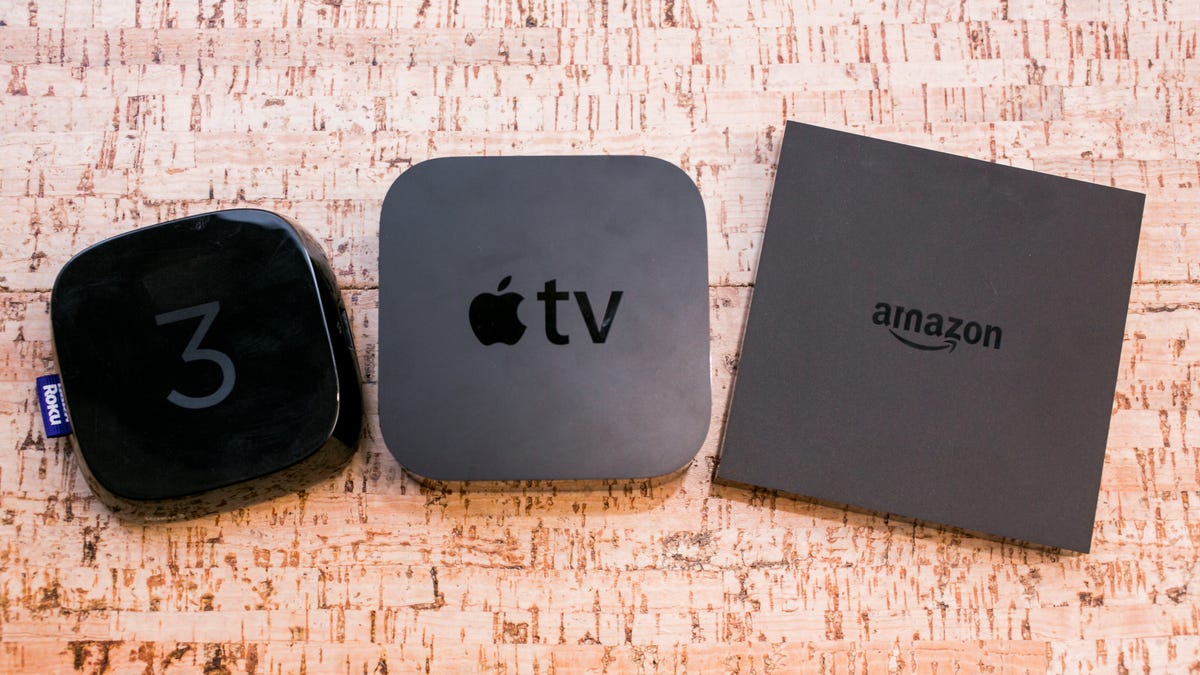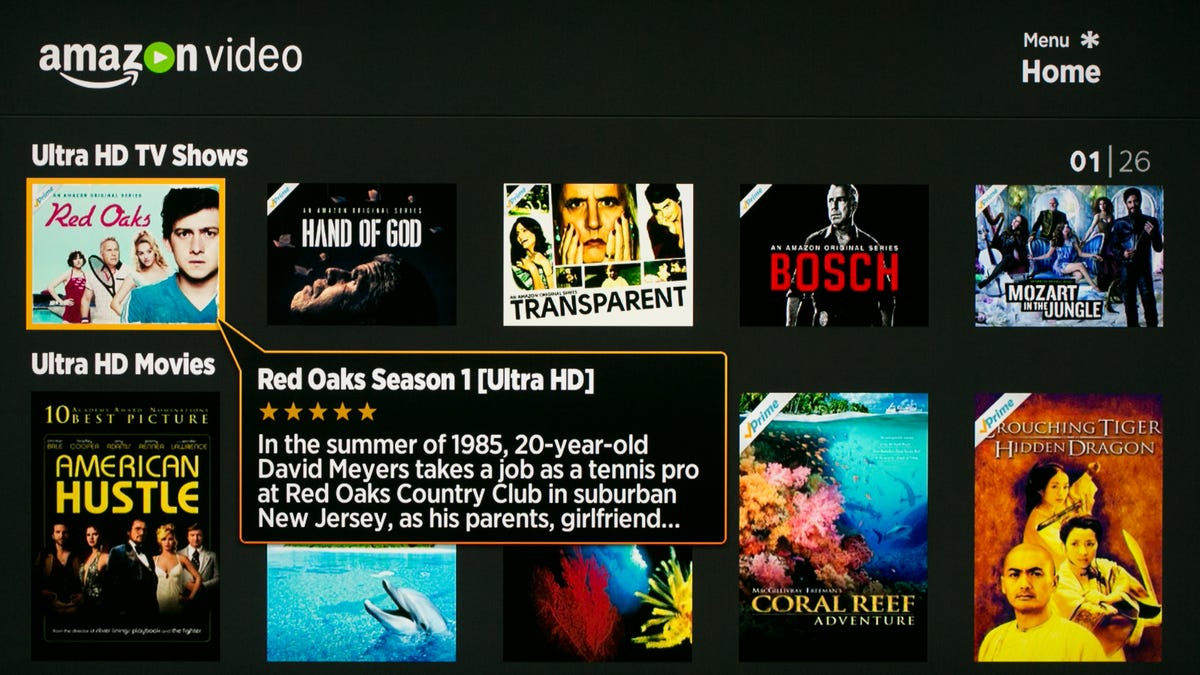Streaming video, whether it’s from Netflix, YouTube, Amazon Prime, Watch ESPN or PBS Kids, is more popular than ever. And the selection of devices to get those shows and movies from the Internet onto your TV continues to expand.
In the last six months or so all of the major players in TV-based streaming — Roku, Amazon, Google and Apple — debuted brand-new gadgets. They also continue to sell older ones. The result is a cornucopia of choices overwhelming enough to give even the most gluttonous binge viewer indigestion.
Related Stories
- Roku Streaming Stick (2016) review
- Apple TV (2015) review
- Google Chromecast (2015) review
- Amazon Fire TV (2015) review
- Nvidia Shield (Android TV) review
I’ve reviewed them all (burp), and now I’m here to thin-slice that deep-fried turducken and help you decide which streaming device is best for you.
“But wait a sec, Katzmaier,” you say. “I already have like 15 doohickeys that stream Netflix just fine. Why should I buy another?”
If you’re happy with your current gear, then by all means stick with it. Game consoles like PlayStation and Xbox are still the most popular for streaming, but dedicated devices like Roku are gaining ground. Not every Netflix-capable device is created equal, and there are plenty of reasons to purchase a new one.
Maybe you want the superior search, better app selection and constant updates that come with a dedicated streamer. Maybe you’re sick of waiting for your game console to fire up before you can visit “The Ranch.” Maybe you’ve lost respect for your dumb “smart TV.” Maybe your old box is too slow or stuck with an old version of an app. Maybe you want your non-streaming, but otherwise perfectly hip grandma to finally understand your “Kimmy Schmidt” references.
Editors’ Note: This story was originally published earlier and has been fully updated to account for the release of the new Roku Streaming Stick.
Blah, blah. Just shut up and tell me what to buy!


Sarah Tew/CNET
Get the 2016 Roku Streaming Stick.
Roku’s streamers offer the most TV apps, the easiest customization and the most comprehensive, price-conscious search, making them the best overall choice. And the new stick is the best value of the bunch, thanks to excellent performance and speed for the price, and just the features you need.
If that’s enough, stop reading and reach for your wallet. It costs $50.
OK, smart guy, but what about all those others?
If $50 is too much: Google Chromecast ($35)
If you can watch it on your phone or tablet or computer, Chromecast can probably put it on your TV. The downside? There’s no separate remote, so you’ll need your phone or tablet or computer to use it.
If your Wi-Fi sucks: Roku 2 ($70)
The main advantage the Roku 2 has over the new Stick is the ability to plug into a wired Ethernet connection. If you have one near your TV, and experience dropouts over Wi-Fi, this box is the best value.
If you have a bit more to spend: Roku 3 ($100)
Unless you want to pay extra for the dubious benefits of 4K, the 3 is still the best Roku overall, adding voice search and a headphone jack to the remote.
If you’re heavily invested in iTunes: Apple TV (the old one, $70)
All that stuff you bought on iTunes over the years? Here’s the cheapest way to play it on the big screen. And no, Roku can’t do that.
If “old” isn’t good enough, you big spender: Apple TV (the new one, $150)
In addition to everything on the old one, the new Apple TV has many of the apps and games you bought already on your iPhone, plus a great remote with superb voice search and recognition.


Sarah Tew/CNET
None of those apply to me. What else you got?
You must have a 4K streamer right now: Roku 4 ($130)
4K TV shows and movies are rare and often expensive, don’t look much better than non-4K streams, and are probably already available on your 4K smart TV. Still interested? Here’s the best option today.
Cheapest device with an actual remote: Amazon Fire TV stick ($40)
The Roku stick is a better all-around choice, but maybe you’re really into Amazon’s TV shows and movies and would rather save $10. Or, don’t save the $10 and get the Fire TV stick with the voice-control remote ($50 total).
You’re so into Amazon content, the stick isn’t enough: Amazon Fire TV ($100)
Fire TV devices push Amazon stuff pretty hard, but maybe that’s OK with you, or you like the selection of games, or you want the cheapest 4K streamer. Admittedly, I’m straining here.
You want 4K, gaming and local file playback. Nvidia Shield ($200)
Built to appeal to tech geeks, the Shield with Android TV comes with a game controller and excels at serving up those thousands of “files” you have on your computer or network attached storage drive.
You want local file access, but Shield is too expensive.
Less affluent file-hoarding geeks should just use the excellent, free Plex app, which is available on every device above (except for the old Apple TV). If you’re geeky enough to prefer Kodi instead, get an Amazon Fire TV device and side-load away, or use the old Google Nexus Player. There’s also the WD TV ($135) , which is like VLC for your TV. Still too expensive? Raspberry Pi ($35), maybe?


Sarah Tew/CNET
Anything else I need to know?
Most of the major video apps are covered on every device.
Just about all of these streamers have apps for Netflix, Hulu, YouTube, HBO, Showtime, Watch ESPN, Plex and PBS Kids, and all offer many, many more. New apps are added to these devices all the time, but there are still some gaps.
Check out our comparison chart for details on app access across devices.
Amazon access varies.
Along with Netflix and YouTube, Amazon is one of the most popular streaming video sources. If you want to take advantage of Amazon Prime’s unlimited streaming, or the retailer’s vast catalog of for-rent and to-buy TV shows and movies, you should know that access varies.
Apple TV, Chromecast and Android TV boxes like Nvidia Shield do not have a native app for Amazon. You can watch Amazon content on those devices, but it’s not as simple as clicking on the app icon. You have to fire up the Amazon app on your phone or tablet and use the “casting” feature — namely Google Cast on the Chromecast and Android TV devices, or AirPlay for Apple TV — to watch on your TV.
All Roku and (duh) Amazon Fire TV devices have native Amazon apps that can access every video on Amazon. The exception is 4K, which varies by device, and HDR (don’t ask).


Sarah Tew/CNET
You need HDMI, broadband Internet and good Wi-Fi.
Nearly every streamer sold today requires an HDMI input, which excludes older TVs. If the TV you’re connecting to lacks HDMI, your only resort is an older streamer like the Roku 1 .
You’ll also need a decent Internet connection. Most entry-level broadband packages will suffice, but streaming video quality may suffer especially during prime-time hours in the evening.
Many streamers need a good Wi-Fi connection as well, and since they connect directly to your TV, you need to have plenty of bars in the living room. A good alternative is to use wired Ethernet, as long as your streaming device supports it.
Consider a universal remote.
Incorporating a streaming device into your system adds some complexity and another remote, so investing in a good universal model can be worth it for the convenience. I recommend Harmony, although IR-only models like the Harmony 650 can’t control the streaming sticks. For that, you’ll need a hub-based Harmony like the Home Control.
Roku also makes the best streaming TV.
If futzing with another clicker seems like too much of a hassle you might be tempted to just stick with your Smart TV. The problem is, most can’t hold a candle to a separate streaming device in terms of app selection, updates, search and ease of use. The solution? Roku TV.


Now playing:
Watch this:
Access hidden Chromecast features
1:47
Got it. Where can I learn more?
For in-depth reviews and videos of all of the devices I’ve mentioned here, and more, check out CNET’s list of Best Media Streamers of 2016. Enjoy!




